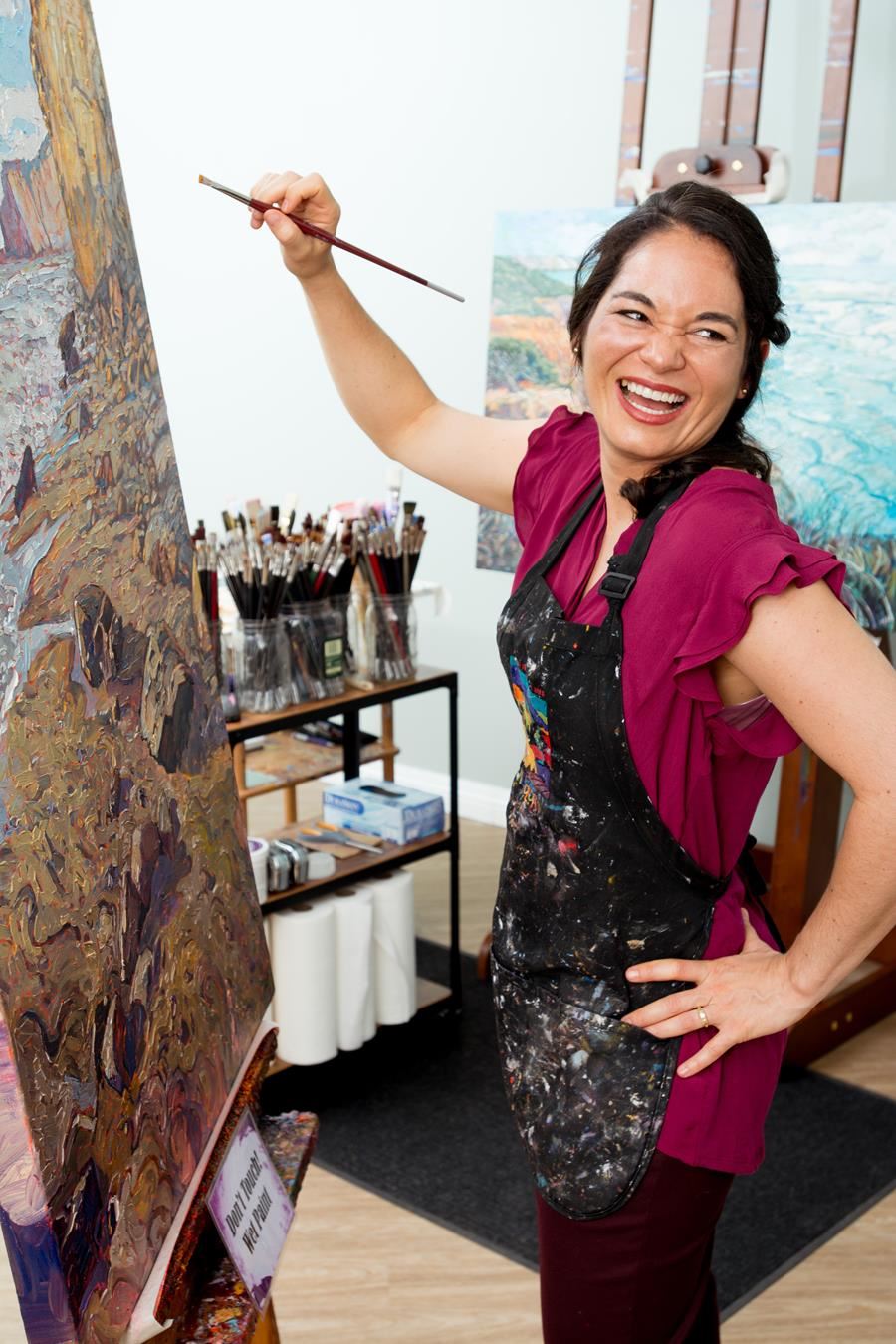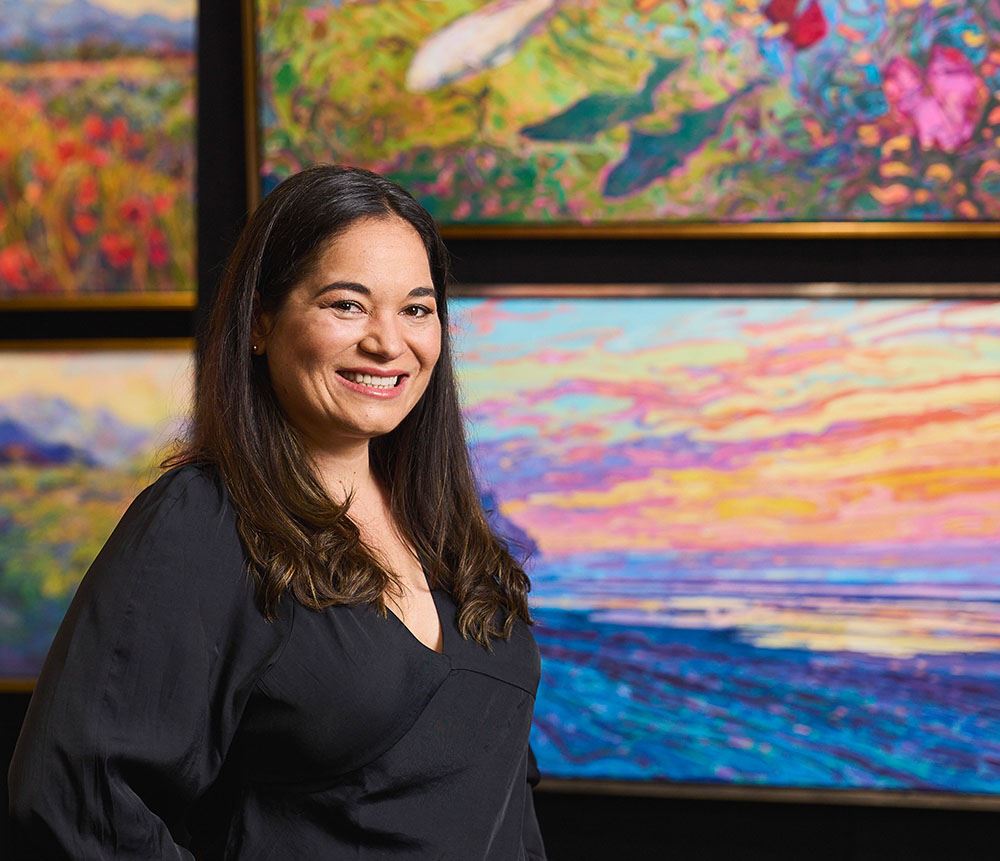Subtotal
$0
U.S. Shipping
FREE
Saved for Later
Shopping Cart
Subtotal
$0
U.S. Shipping
FREE
Saved for Later
One of the questions I get asked most often is, "How do you know when to stop painting?"
After creating over three thousand oil paintings during the past fifteen years, I have developed an instinctive sense of knowing when a painting is complete. Over and over in my painting career, I have experienced that a painting reaches a "peak" of excellence, and the more I fuss with the painting after that moment, the worse the painting gets. I talk to artists all the time who complain about their paintings getting muddy and overworked. So, I know I am not the only one who has experienced this.
I can't tell you how many times I have picked up the brush again after I had already decided the painting was complete, just to place just one more brush stroke... only to regret it afterward as a mistake.
One of the hallmarks of an Open Impressionism painting is the painterly brushstrokes, and I achieve this effect by restraining myself from overworking my paintings. My goal, in fact, is never to overlap a brush stroke.
So, how do I know when a painting is complete? I paint until the work has attained the emotional response I was aiming for (usually when most, but not all, of the underpainting is covered), and then I stop.
Continuing the painting past this point, past the point of achieving the communication I set out to create, will only degrade the communication and make it foggy. I want my paintings to be clean, crisp, and joyous -- like I just picked up a brush and painted the whole canvas without a pause.
I do a quick “quality control” step with myself before I sign the painting: I step way back from the painting, squint my eyes at it, and often take an iPhone photo of the piece. These three actions help me uncover any areas of the painting that are too high contrast and distract the eye away from the focus of the piece. I also make sure my eye is drawn to the areas of focus with directional brush strokes, contrasting color, contrasting value, and contrasting texture. (The eye is first drawn to the points of highest contrast in the painting.)
Often, I finish my painting in the evening, and I leave the final qual-check until the following morning. The next morning is a perfect time to look at my painting with new and unbiased eyes, seeing the painting fresh, like I had never seen it before. This is the best way to make sure my painting is, in fact, complete.
Finally, I sign my initials at the bottom corner, and I have a firm policy never to touch the painting again after my initials are placed. This self-control takes trust in myself, gained from years of experience, as well as a healthy dose of cheerful insouciance
Would you like to see the results of this policy? View my portfolio.

Discover the artist at the forefront of modern impressionism.

About Erin
ERIN HANSON has been painting in oils since she was 8 years old. As a teenager, she apprenticed at a mural studio where she worked on 40-foot-long paintings while selling art commissions on the side. After being told it was too hard to make a living as an artist, she got her degree in Bioengineering from UC Berkeley. Afterward, Erin became a rock climber at Red Rock Canyon, Nevada. Inspired by the colorful scenery she was climbing, she decided to return to her love of painting and create one new painting every week.
She has stuck to that decision, becoming one of the most prolific artists in history, with over 3,000 oil paintings sold to eager collectors. Erin Hanson’s style is known as "Open Impressionism" and is taught in art schools worldwide. With millions of followers, Hanson has become an iconic, driving force in the rebirth of impressionism, inspiring thousands of other artists to pick up the brush.